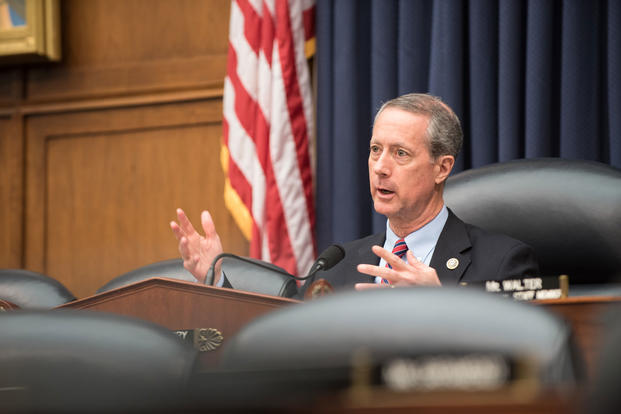As Congress reviews the Trump administration's proposed Space Force, one lawmaker said funding within the fiscal 2020 defense budget may not be enough to get the new military service off the ground.
Rep. William "Mac" Thornberry, R-Texas, the ranking member of the House Armed Services Committee, told reporters Wednesday it will take time to balance the requirements coming from the White House, Congress and Pentagon for standing up a new service for space.
But "we've got to get it started," he said during a roundtable discussion in Washington, D.C.
"I think we will come out of conference [with] a lean Space Force designed to meet the objectives that we all want to achieve."
Thornberry said the White House started with a "relatively simple" implementation plan. Then, the Defense Department sent its own additions, which "not many people support" on Capitol Hill in their current form, he said.
Related content:
He added that lawmakers aren't ignoring the Pentagon. "We'll listen to what [DoD officials] say, but there are a lot of different voices saying things … depending on where you are."
While President Donald Trump called for a "separate but equal" sixth military branch in June 2018, the proposal has pinballed around the Pentagon in recent months only to land back in the hands of the Air Force. Lawmakers originally called for a space branch under the purview of the Air Force in 2017.
That year, Thornberry and Rep. Mike Rogers, R-Alabama, created language in the fiscal 2018 National Defense Authorization Act that would have required the service to stand up an internal "U.S. Space Corps" in hopes of taking adversarial threats in space more seriously. That effort hit a roadblock months later and was ultimately dropped, only for the idea to be resurrected later by the president.
Now, the Senate and House have different opinions on how the Space Force should be organized, as well as the amount of funding that should be devoted to the effort.
Both agree the branch should be nestled within the Department of the Air Force.
The Senate Armed Services Committee is pushing ahead with plans that largely deliver what the Pentagon wants, but the new service's top officer likely won't sit on the Joint Chiefs of Staff, at least not right away, according to current plans.
In the House, the proposed organizational structure for the Space Force differs slightly, with lawmakers dropping the "Force" name in favor of a "Space Corps" within the Air Force. The Senate Armed Services Committee approved the Defense Department's $72.4 million request for the Space Force; the House still may be looking to rein in that spending.
Thornberry on Wednesday referenced an analogy from Rogers regarding the Space Force's creation: "It's kind of like a Christmas tree. You're just putting it in the stand this year," he said. "And later the lights, the ornaments, the tinsel, and all that stuff will be added.
"I think we will have bipartisan agreement on that. … We just may not have everything that DoD -- or some people at DoD -- want," Thornberry said.
-- Oriana Pawlyk can be reached at oriana.pawlyk@military.com. Follow her on Twitter at @Oriana0214.













